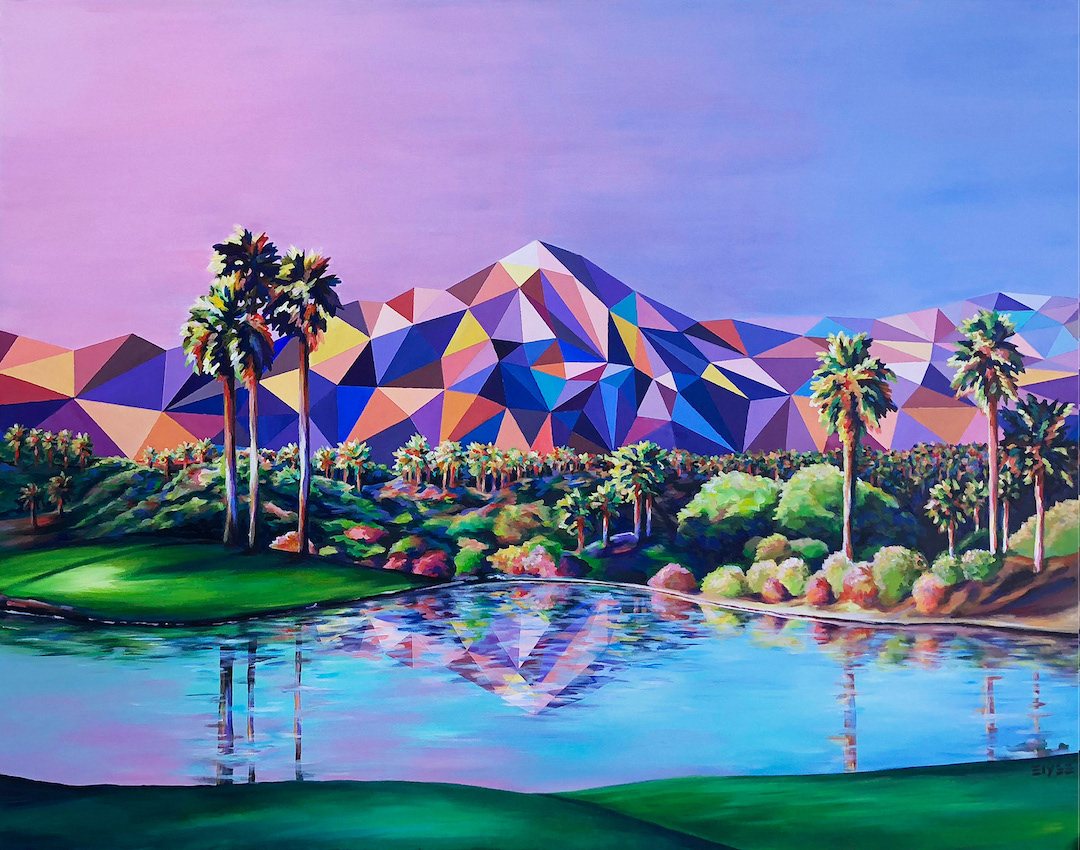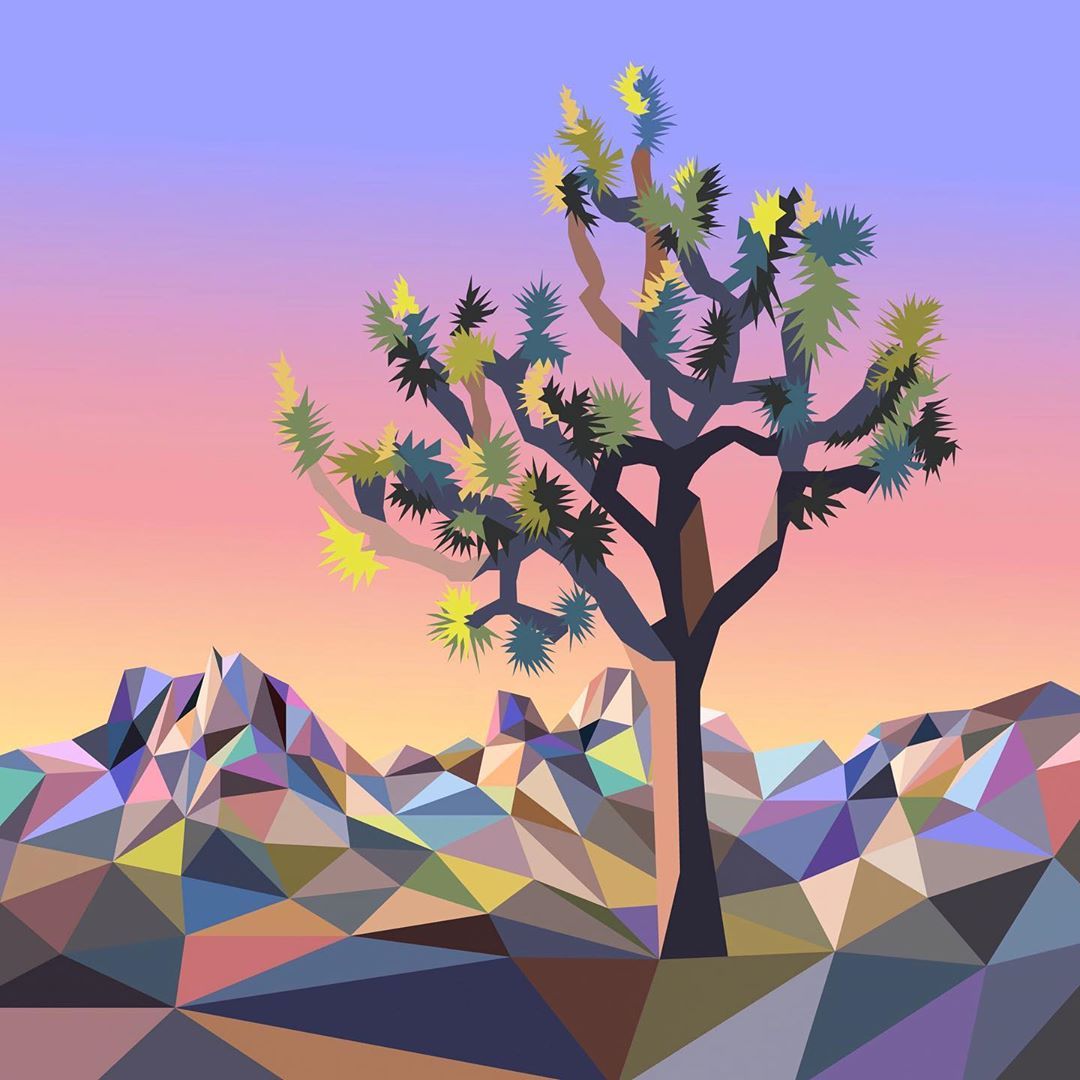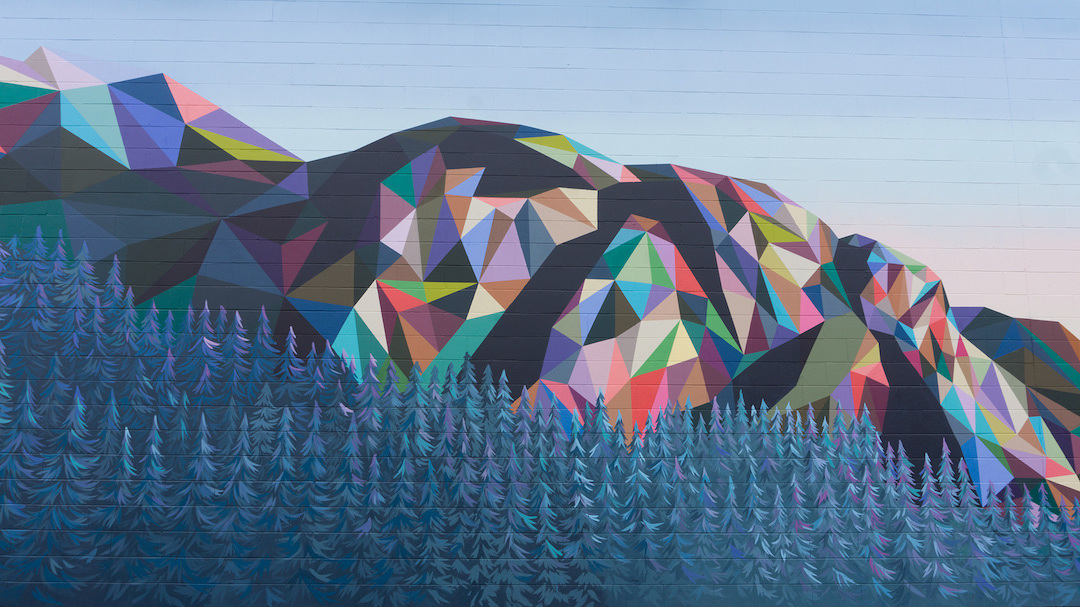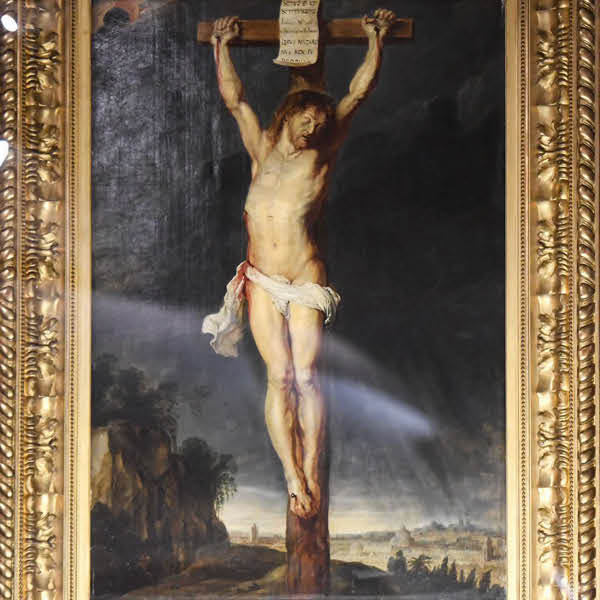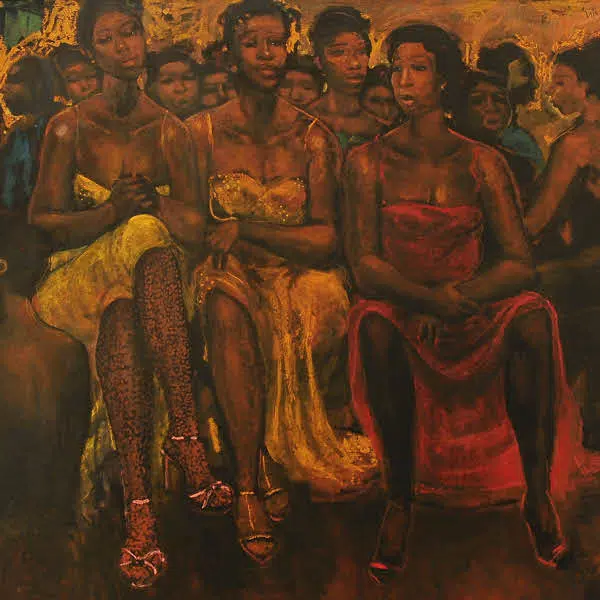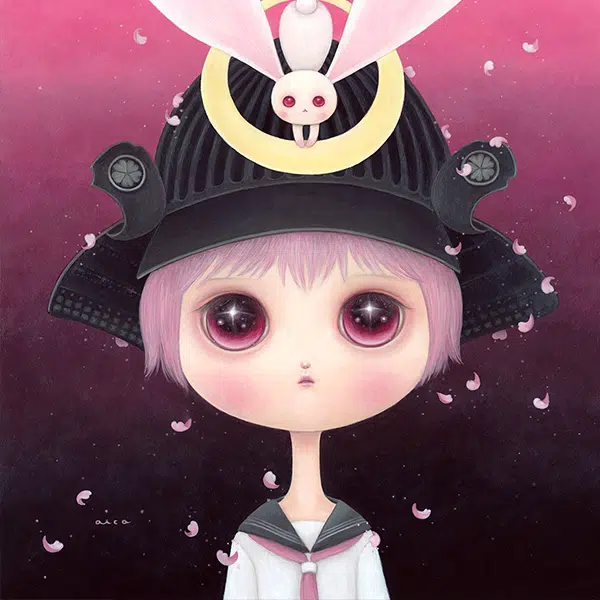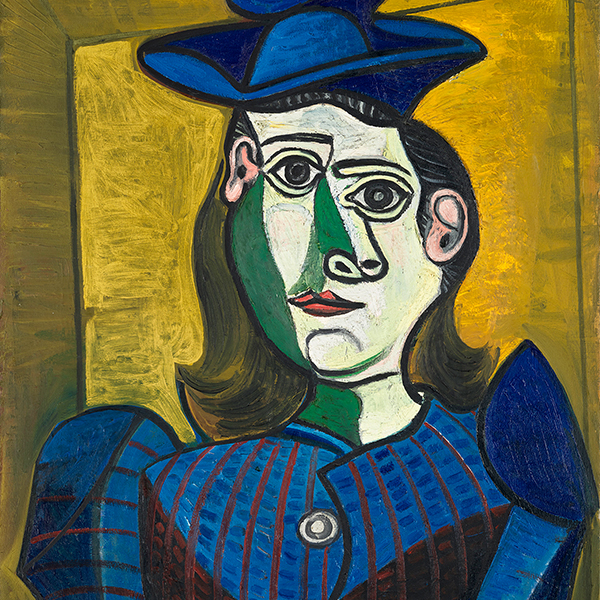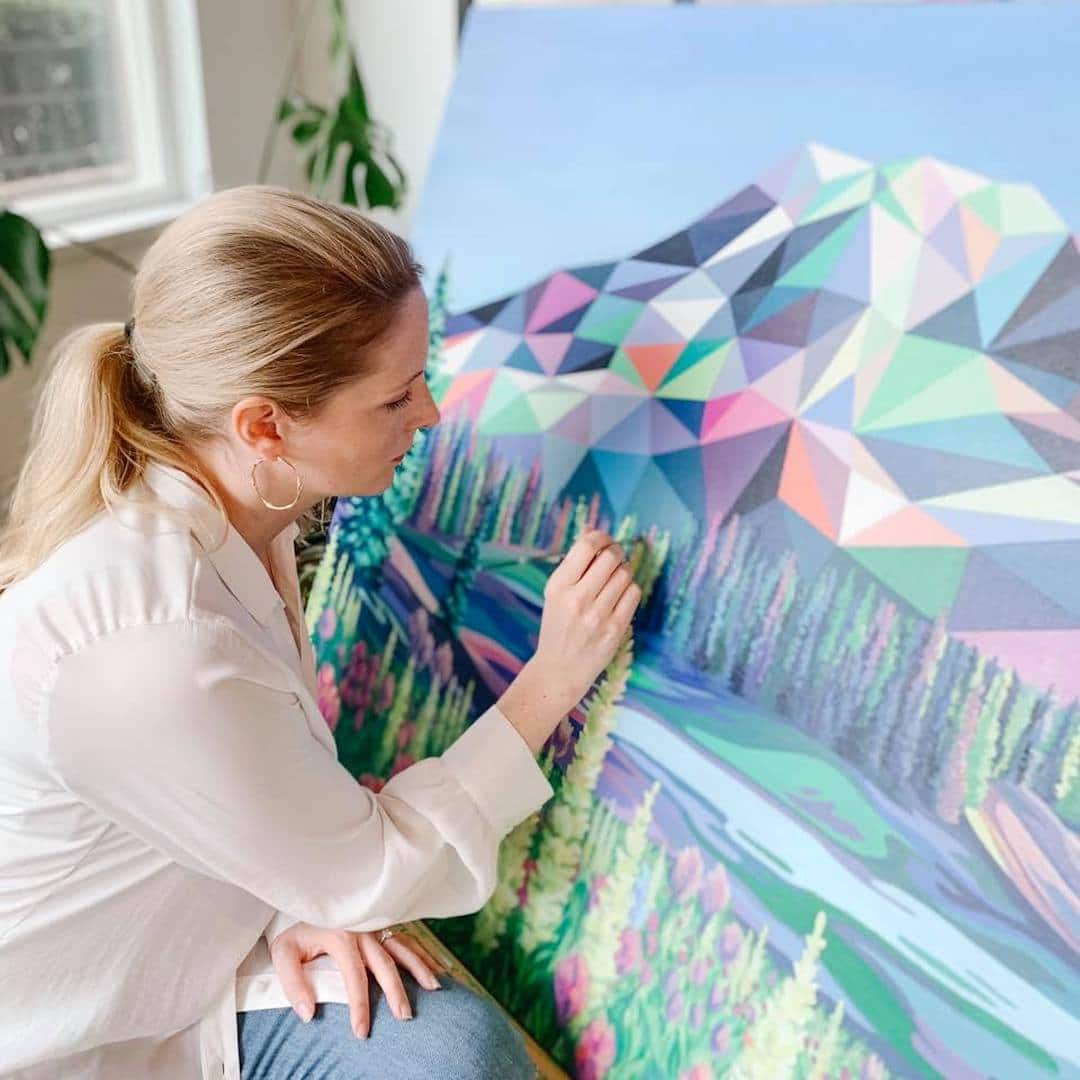
Contemporary landscape artist Elyse Dodge captures the beauty of the world’s mountainscapes by visually deconstructing them into minimal, geometric compositions. Through exploring the contrast between the hard and soft forms in nature, she sees the world in color, shape, and light. The talented artist’s eye-catching landscape paintings reimagine cliffs and peaks as bold polygonal shapes, while seas and forests are contrasted in soft, painterly brushstrokes.
Utilizing her background in graphic design, Dodge begins each work by creating digital mock-ups of her scenes, before translating them into acrylic paint on canvas. Many of her pieces are inspired by the mountain ranges and forests of her home, British Columbia. Glacial peaks and lush forests are depicted in icy blue and deep green hues. However, Dodge's recent relocation to LA has begun to influence her work—the Californian sunshine and desert landscapes are captured in warm color palettes and tropical motifs.
“I have realized that when you break down a view into its most basic form, it still remains beautiful,” reveals Dodge in an artist statement. “The polygonal shapes transform the peaks from being something that is recognizable as a mountain to a faceted, diamond-like form. These surreal scenes encourage the mind to reimagine what an alternate and more vivid world would look like.”
We recently caught up with Dodge to find out more about her inspiration and process. Read on for My Modern Met’s exclusive interview.

When did you first take up painting and are you classically trained?
Since I was young I have always been creative and had a big imagination. My mother is an artist and my father is a builder so I think growing up in that environment encouraged me to find my own artistic expression. I was always drawing, painting, dancing, creating, and experimenting with different mediums and was lucky enough to have a mother who was classically trained in the arts to pass down her knowledge.
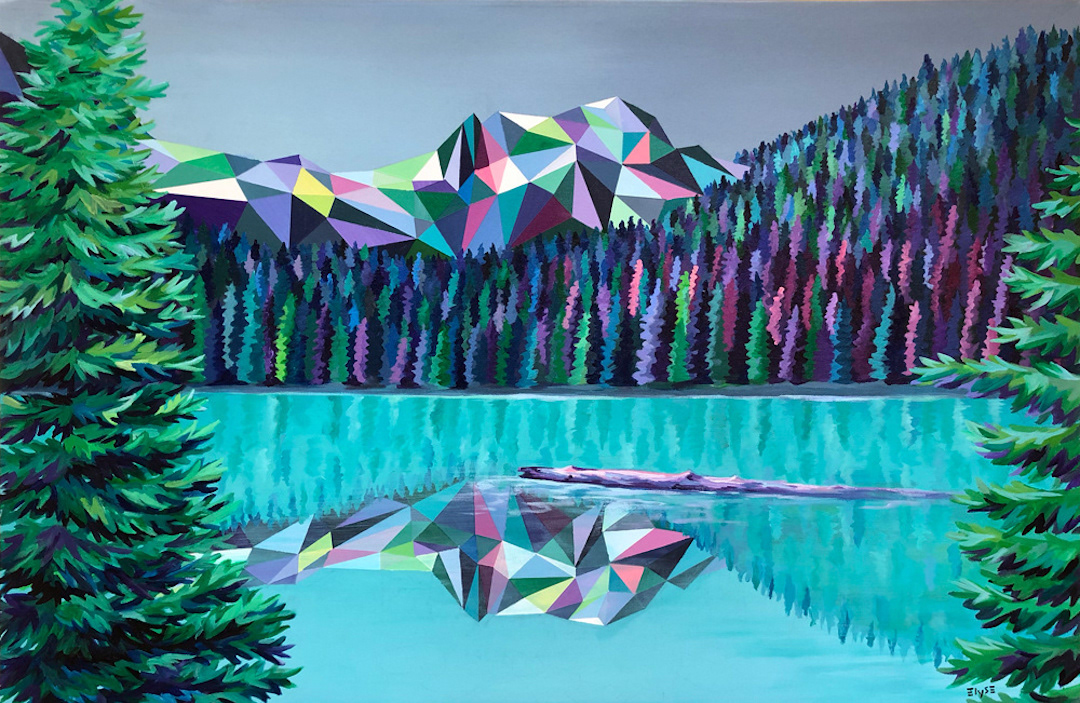
How did you come to develop your minimalist, graphic style?
I took every art course available in high school; but once I graduated, I was torn over whether or not I wanted to pursue graphic design or fine arts. I really found it limiting to have to decide on one direction so in 2008 I started a diploma in Design Formations that covered many different facets of illustration and design. Through that program I was exposed to different design tools, graphic design, typography, exhibition design, interior design, and art history. It was the right combination of course work to stimulate my interest in the relationship between art and design. During that time I continued to paint on the side but it wasn't until 2013 when I had my first art show that something clicked. I realized that I could combine my education in graphic design and my appreciation for minimalism with my love for landscape painting.
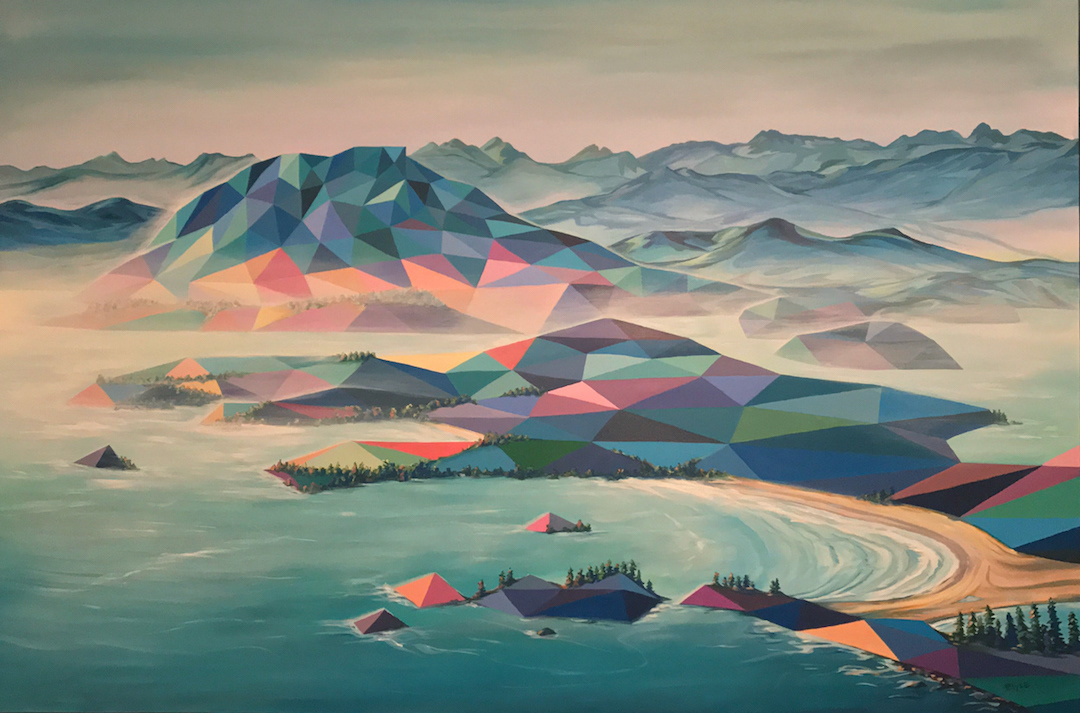
Does technology inspire your work?
Technology is a necessity for my work. These days I split my time between designing art on Illustrator and painting at my easel. I really enjoy the flexibility of getting to work in different environments and having the ability to exercise different skills. In the near future, I would love to dive deeper into the intersection between technology and art and play around with projection mapping and virtual reality.
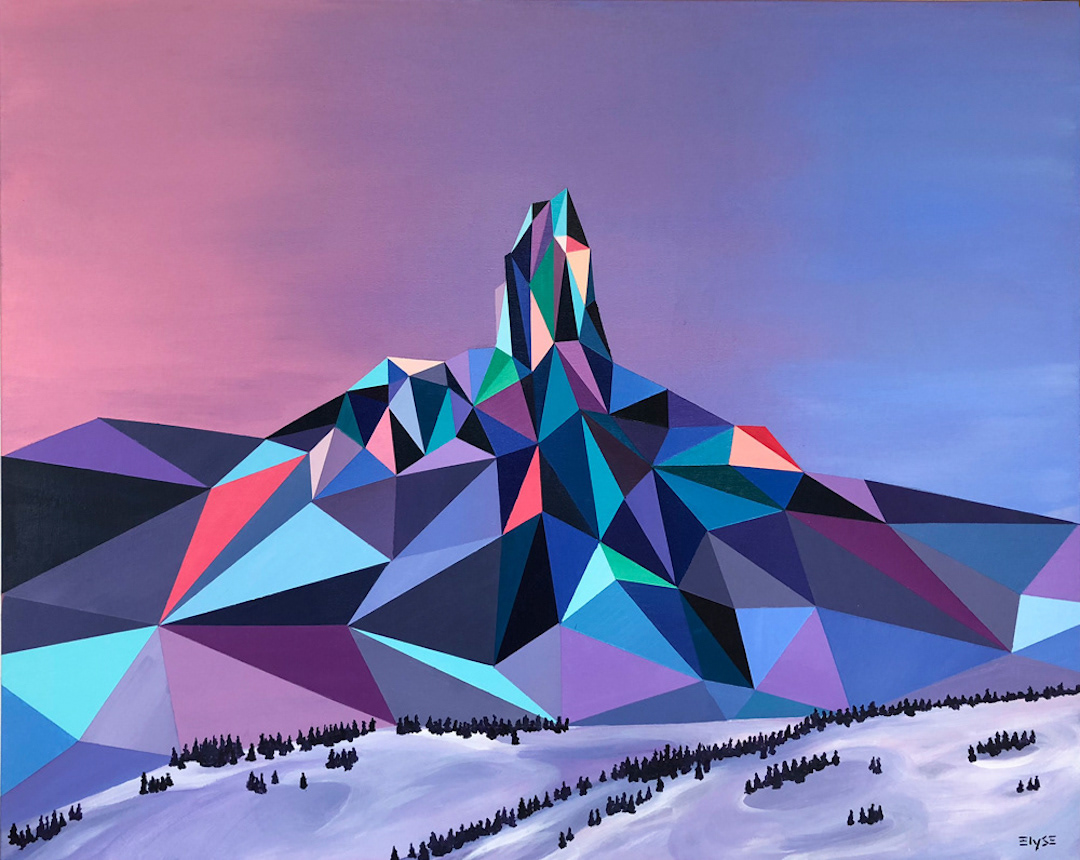
Can you describe your process for creating a painting?
I always start with a location and will find inspiration through travel, through private commissions or through searching on Instagram or Pinterest. Once I discover or create the right composition I will pair it with the right color palette. From there I start the process of deconstructing the landscape into a low poly, minimal design. Once the image is ready I project it into my canvas and hand draw the lines. Once the image is traced, the long process of painting and taping off triangles begins!
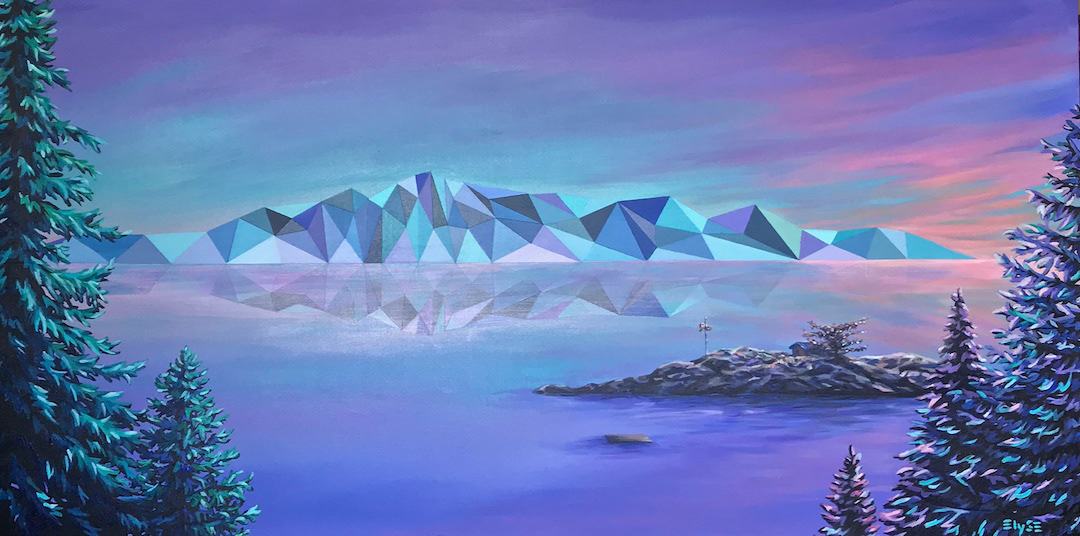
Are you influenced by any other artists or artistic movements?
I admire artists who are able to go beyond just creating art and are able to build a brand and unique voice for themselves. I think some great examples of artists who are doing this right now are Heather Day, Andy Dixon, and Ola Volo (2 of which are fellow Vancouverites). I love seeing artists who are creating experiences with their work whether it’s through mediums like VR, projection mapping, playing with scale, or installation work. I think that TeamLab and Moment Factory are two groups that have mastered turning art and design into immersive unexpected experiences.

Your previous work was influenced by Canada's mountainous landscapes, but you've just recently moved to California. How has the change of scenery influenced you work?
I have always been mesmerized by tropical and desert landscapes so moving here will only push that further. I think my work will start to take on more of a saturated warm color palette to reflect the landscapes and California sunshine. I have been sketching a lot since moving to LA and think you can expect to see a lot more palm trees, cacti, desert vistas, ocean horizon lines, and minimal architecture in my upcoming work.
